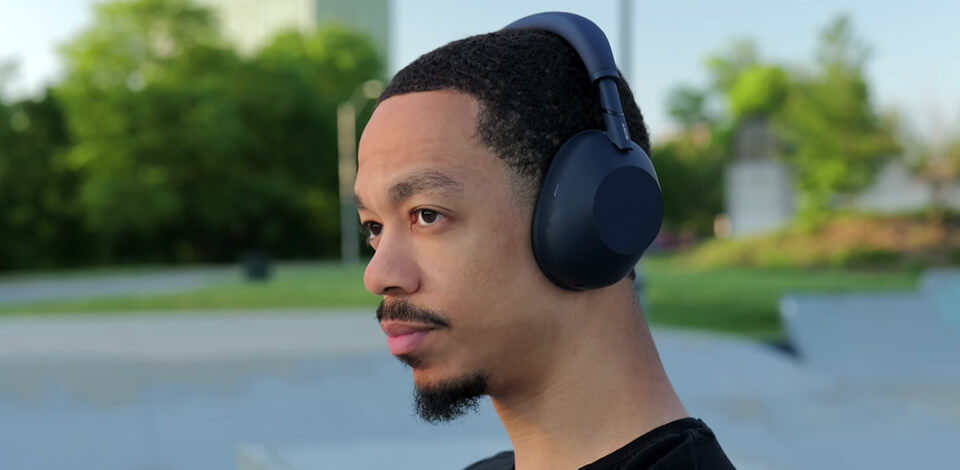
As a gadget enthusiast, I’ve experienced different tech challenges over the years. One of the most frustrating, though, has been finding headphones for small heads. Some of them slipped off at the slightest movement, while others felt like they were squeezing my head after only an hour or two.
After discussing this issue with the FixThePhoto team, I realized that I wasn’t the only one struggling with this. That’s when I decided to test headphones specifically designed for petite heads.
To create this list, I collaborated with my colleague Tetiana. She suggested a few standout models based on her experience, and I turned to Reddit, Amazon reviews, and other forums to find recommended models.
When testing 40+ headphones for small heads, we evaluated different aspects like security, the quality of sound, comfort, etc. Together, we narrowed the list to seven promising options:
Amazon: 50+ bought in the past month
Bose: 14K+ bought in the past year
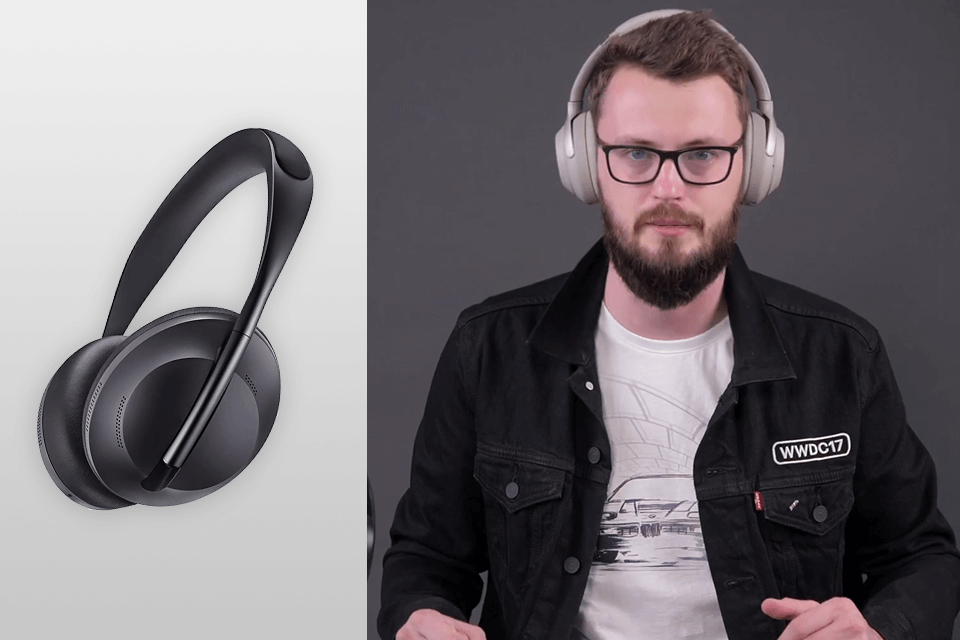
While browsing Amazon, I discovered the Bose 700, highly-rated headphones under $300. They attracted my attention due to their reputation for comfort and premium build.
The first thing I liked was the ease of adjusting the headphones to perfectly fit my head size. The headband adjusts effortlessly, and the slim ear cups are well-padded, providing a secure and comfortable fit without any pressure. Unlike many other headphones that feel heavy or are not securely fixed on the head, this model stayed firmly in place even during intensive home training.
The quality of sound matches the one advertised by Bose. I enjoyed crisp highs, rich mids, and a balanced bass. Another feature that impressed me about this model was noise cancellation, which had different levels of ANC blocking background noise without making my ears feel uncomfortable.
Moreover, these over ear headphones for small heads have a lightweight construction, which makes them ideal to wear for a long time. I experienced no fatigue during multiple hours of editing work.
Amazon: 200+ bought in the past month
Best Buy: 600+ bought in the past year
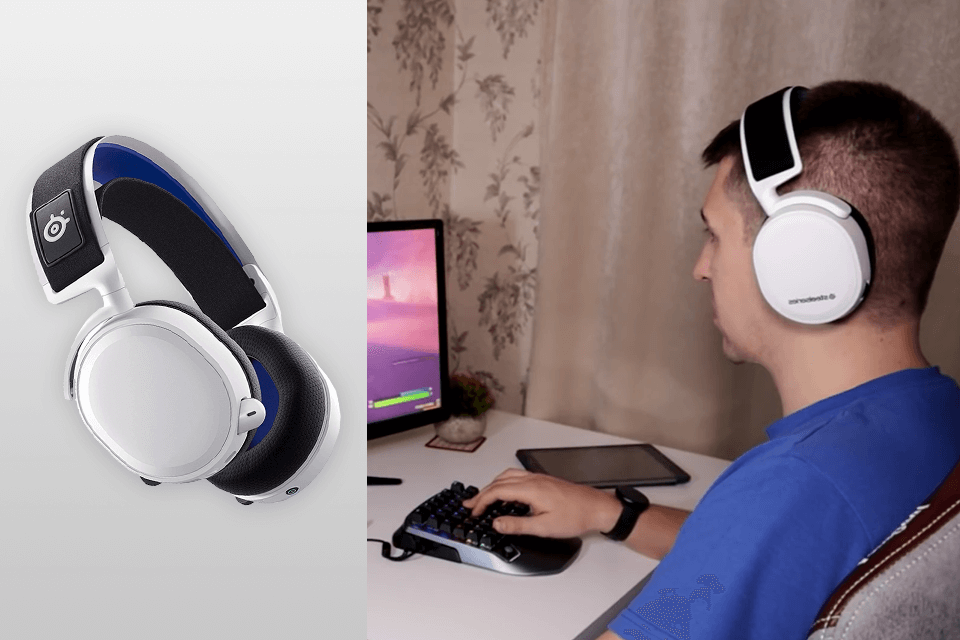
A client from FixThePhoto recommended SteelSeries Arctis 7P+, and it turned out that this model is an ideal fit for gaming and video editing. Based on their feedback, these were the only headphones that fit snugly on their smaller head.
The Arctis 7P+ stands out for its thoughtful design made to enhance comfort. Its ski-goggle-style headband easily adjusts to fit your head, making it feel light and pressure-free. Moreover, the lightweight build and plush ear cushions make the time you wear these headphones for ear health enjoyable.
The Arctis 7P+ delivers amazing sound quality with just the right amount of bass for an immersive experience without being too loud. Whether you’re gaming or watching a movie, the audio is clear and detailed. The spatial sound feature is another selling point, as it allows catching even subtle sounds around you.
I also liked that these Bluetooth headphones for small heads are fitted with a retractable mic, which is beneficial for both video calls and gaming.
Amazon: 3K+ bought in the past month
Adorama: 29K+ bought in the past year
B&H: 17K+ bought in the past year
Best Buy: 9K+ bought in the past year
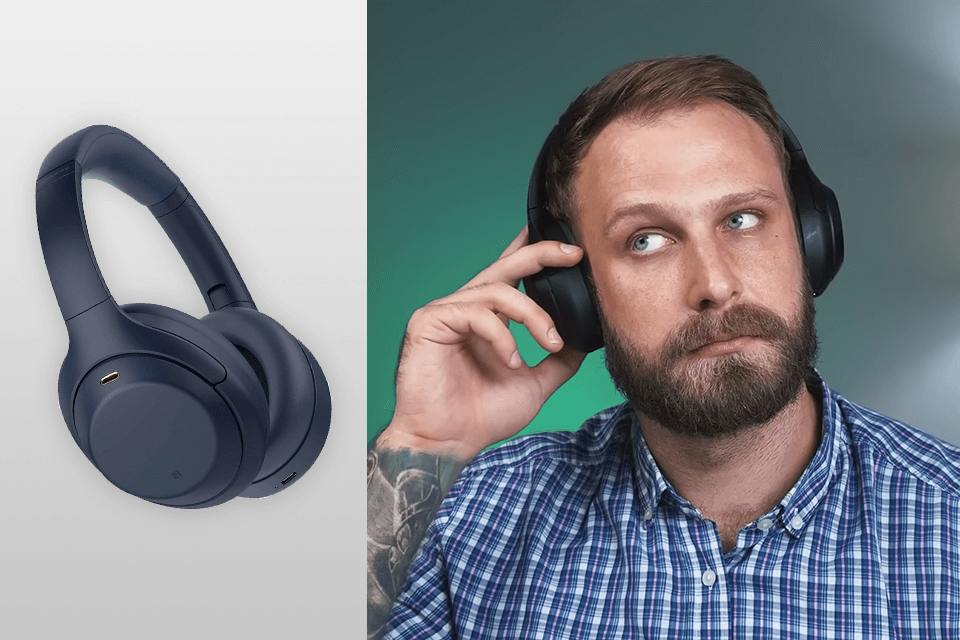
The Sony WH-1000XM4 was highly praised by Tetiana, who insisted on their unmatched noise cancellation and all-day comfort.
In comparison to the Bose 700, the Sony WH-1000XM4 features a somewhat more cushioned headband and ear cups, providing an added level of comfort. However, the fit is a bit more relaxed than that of the Bose, which makes them less suitable for intense movements.
But when it comes to stationary tasks such as editing or working, this model is a perfect option. Their lightweight construction and adjustable headband allow for easy customization, although I noticed that I had to adjust the fit more frequently than with the SteelSeries Arctis 7P+.
What impressed me the most was adaptive noise cancellation. Whether I’m in a lively café or a serene home office, they seamlessly adapted to my surroundings, effectively minimizing distractions better than any other noise cancelling headphones under $200. The audio quality was outstanding, delivering rich bass and clear treble that enhanced my listening experience.
Amazon: 1K+ bought in the past month
Best Buy: 6K+ bought in the past year
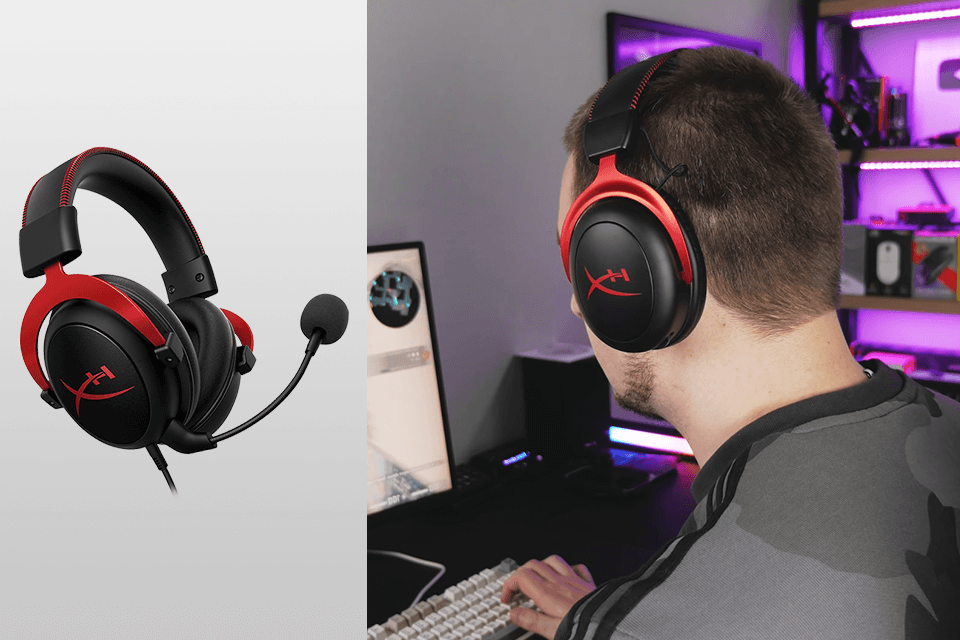
The HyperX Cloud II sparked my interest after I noticed numerous recommendations on Reddit threads on gaming and comfort. The first thing that grabbed my attention was their lightweight but solid build. The adjustable metal frame and memory foam ear cups offered a snug yet comfortable fit, so the headset remained in place, even after long hours of use.
In contrast to the Sony WH-1000XM4, which sometimes felt a bit loose, these over the ear headphones for small heads securely embraced my head without too much pressure, which is crucial for those with smaller head sizes. The gaming headset offers impressive sound quality, with deep bass and clear mids.
However, as for headphones for classical music or editing this model is not so good. Other headsets I tested, like the Bose 700 or Sony, offer a more balanced and detailed sound profile. The absence of active noise cancellation was a notable drawback, especially in louder surroundings.
I agree with multiple opinions on Reddit that they’re comfortable and durable, but I wouldn’t call them the most versatile. If you’re mainly into gaming or need a secure fit, the HyperX Cloud II is a great choice. However, other models might be better for everyday use.
Amazon: 200+ bought in the past month
B&H: 1.5K+ bought in the past year
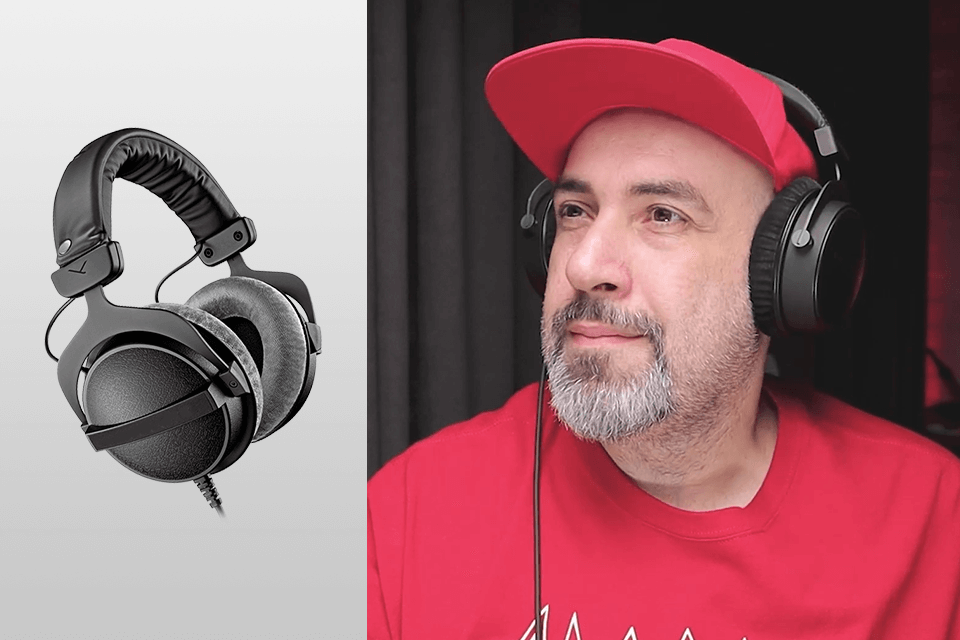
I’ve relied on the Beyerdynamic DT 770 Pro as my studio headphones for years. They deliver great sound and are very durable, but after comparing them to newer models, I ranked them fifth in this list.
One of the aspects I considered was their fit. The velour ear pads are some of the most comfortable I’ve ever worn, and the headphones are adjustable. However, the headband is bulkier than the Bose 700 or SteelSeries Arctis 7P+. For smaller heads, this can make the fit less secure unless adjusted very carefully.
However, the Beyerdynamic DT 770 Pro delivers superior sound, which is well-balanced and crystal clear. This is why this model will be the perfect headphones for video editing. However, their performance in noisy environments is lackluster as they lack active noise cancellation.
After years of use, I’ve noticed that the velour pads, though plush and comfortable, tend to flatten over time. Swapping them out every few years greatly improves comfort. While the DT 770 Pro is still a reliable option for studio work, there are now more ergonomic models better suited for smaller heads.
Amazon: 500+ bought in the past month
Edifier: 50K+ bought in the past year
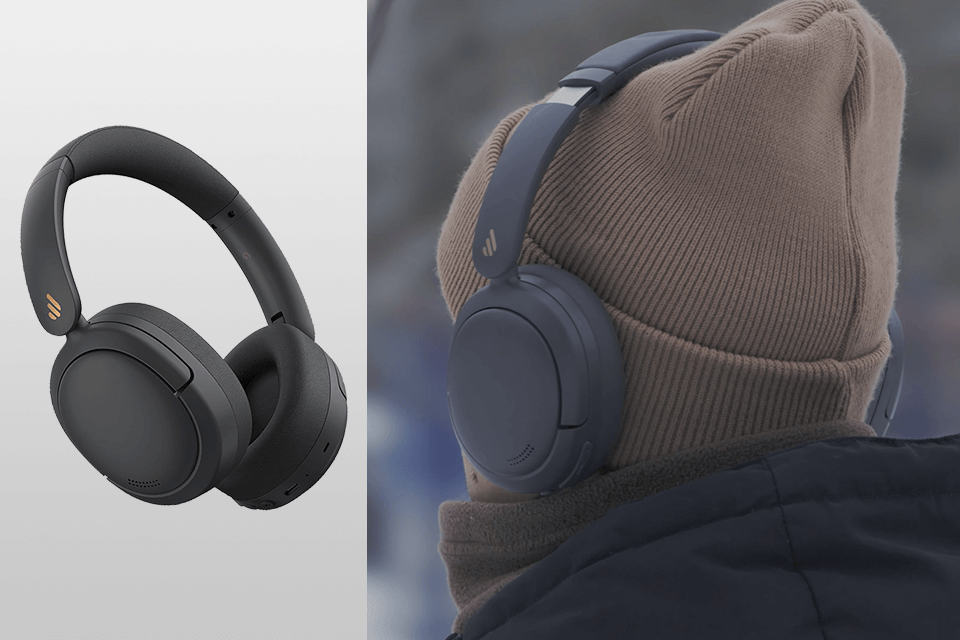
One of our clients recommended the Edifier W800BT, praising its straightforward design, lightweight construction, and affordability. At first glance, these headphones are almost fragile, though quite sturdy for headphones under $50.
The ear cups are nicely cushioned, and the headband adjusts smoothly to provide a snug fit, even on smaller heads, without slipping during activities like walking or light jogging. However, the plastic materials don’t have the high-end feel of models like the Bose 700 or Sony WH-1000XM4.
The overall quality of sound is good. It is clear and balanced, but it lacks the depth and detail you’d find in premium models. These small head headphones work well for casual listening, though they’re not suitable for critical audio tasks.
Amazon: 10K+ bought in the past month
JBL: 100K+ bought in the past year
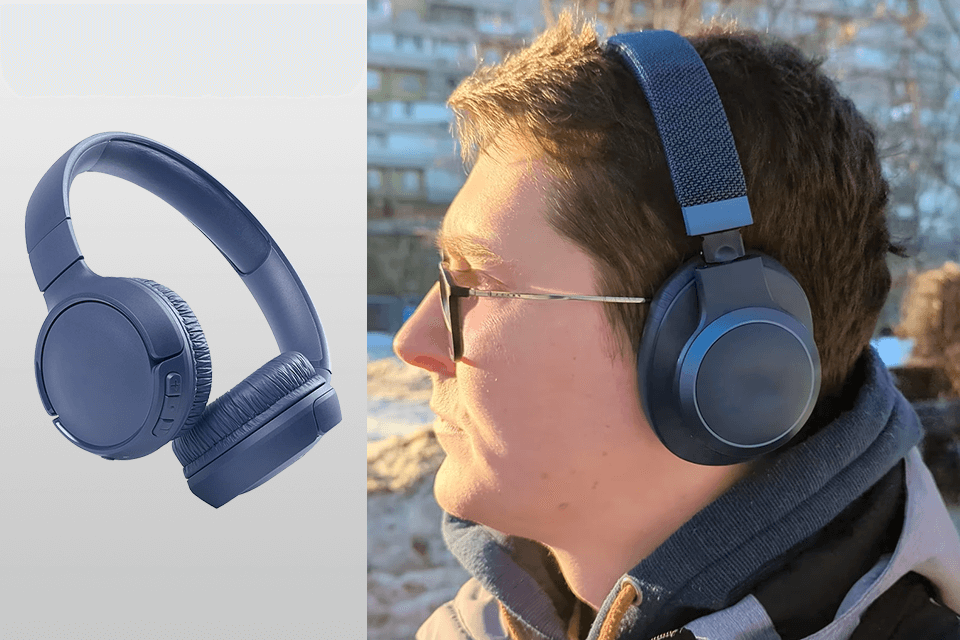
I came across the JBL Tune 510BT while browsing Amazon, where they had impressive reviews and recommendations. The lightweight construction was the first thing I noticed. Undoubtedly, this was a decent small headset with a handy on-ear design.
The adjustable headband fits securely, and the ear cups aren’t too large. However, compared to the Edifier’s softer cushioning, the padding on the JBL 510BT is firmer.
When it comes to sound, these headphones shine with their powerful bass and lively audio profile. They’re perfect for genres like pop, EDM, and hip-hop, but aren’t the best choice for genres that demand more detail, such as classical music or podcasts. While they lack active noise cancellation, the on-ear design does a reasonable job of reducing background noise passively.
Although they’re not ideal for long studio sessions, these headphones are a great option for users with smaller heads who want budget-friendly, compact headphones for podcasting and everyday listening.
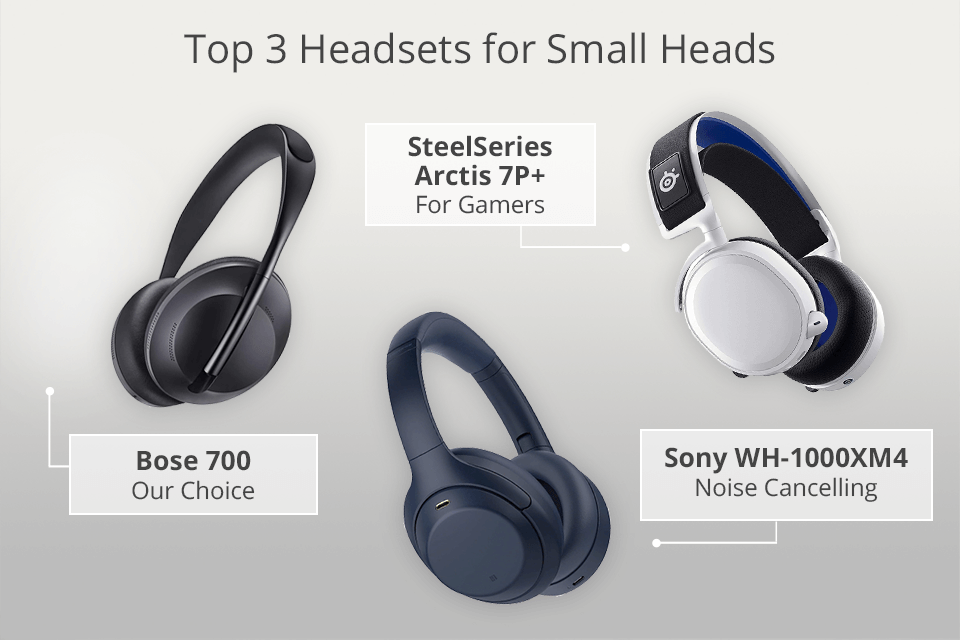
Finding the best headphones for smaller head sizes has been all about achieving the ideal blend of comfort, audio quality, and practicality for daily use. After exploring different options and analyzing the feedback from fellow users, I’ve discovered that certain features are crucial in ensuring a snug and secure fit for those with petite heads.
Test before you commit. If possible, visit a store to try on the headphones. Spending just 10-15 minutes wearing them can quickly show whether they’ll remain comfortable over time. I’ve learned from experience that buying headphones without testing them first can be risky—after using them for a while, I realized they didn’t fit my head as well as I’d hoped.
Adjustability is key. The first step I take is adjusting the headband to its minimum size. Even then, I ensure it feels secure without being overly tight. However, some headphones can still feel oversized at their smallest setting, which can be quite frustrating, so I prioritize checking this detail right away.
Look for comfort around pressure points. When trying out all the models, I checked how they fit the top of my head and the area around the ears. A little bit of pressure is okay, but any pain is a clear warning sign. Headphones should rest comfortably on your head and remain painless, even after extended use.
Check the ear cup seal. When testing over-ear models, I ensure the ear cups completely surround my ears. Any gaps that allow external noise in can deteriorate my listening experience. Additionally, I look for a secure fit around the ears, as this enhances noise isolation and improves bass performance.
Move around. Simply sitting still while wearing headphones isn’t about me. I move around, nod, and shake my head to test whether they stay firmly in place. For those with smaller heads, it’s essential to confirm the headphones won’t slide off or shift during vigorous activities.
Consider your hair. Your hairstyle can significantly impact how headphones fit, especially if you frequently switch between ponytails or updos. It’s a good idea to test headphones while wearing your go-to hairstyle to check if it affects the fit. My experience shows some hairstyles can make headphones feel either tighter or looser.
Test for extended comfort. A big lesson I’ve learned is to wear headphones for a long time to really test how comfortable they are. They might feel fine at first, but after a while, they could get uncomfortable. If you can, use them for a longer stretch to see if they stay comfy.
Return policies are your friend. Always buy from retailers with a good return policy. It gives you the chance to test the headphones at home for longer periods. This way, you can make sure they’re truly comfortable. I learned this the hard way. Once, I had to return a pair because they started feeling uncomfortable after a long session, even though they seemed fine at first.
Look for customizable fit options. Certain brands provide headphones with features like adjustable ear cups or swappable headbands. These options make it easier to get a custom fit. I’ve found them especially useful for smaller head sizes, where a standard design might not work as well.
Finding good headphones for small heads requires a focused and deliberate approach to guarantee practical and reliable results. I aimed to pinpoint options that offered an ideal fit, comfort, and overall functionality for people with petite heads. I took into account recommendations from Amazon, Reddit, the FixThePhoto team, and clients with similar needs.
I tested out more than 40 models, including Logitech G435, Beats Solo 3, Urbanears Plattan 2, JBL Quantum 300, B&O Play by, and Trelab Z2. Although each had its own appealing features, some didn’t enter my list of favorites because of certain drawbacks.
For example, the Logitech G435 lacks noise isolation, the Beats Solo 3 pressed too tightly on the head, the Urbanears Plattan 2 had a loose fit, the JBL Quantum 300 didn’t offer the comfort or adjustability required for extended wear, and the Trelab Z2 sound quality was worse compared to other options in the same price category.
The physical fit of each headset was one of the most important aspects. I tightened the headbands to their minimum size and observed how securely they remained in place during everyday activities such as walking or sitting at a desk. The grip strength and pressure distribution were important factors to consider, as too much force or uneven pressure could lead to discomfort.
Then, I assessed sound quality and performance in daily activities like music listening, gaming, and making calls. Another key factor was comfort over long periods. I used each headset for several hours to check for issues such as headaches, ear strain, or overheating.
I also evaluated durability and portability, focusing on features like reinforced hinges, adjustable headbands, and overall structural integrity. Such a comprehensive approach helped me identify the best noise-cancelling headphones for small heads. These models strike a balance between comfort, functionality, and affordability, catering to a range of budgets and preferences.